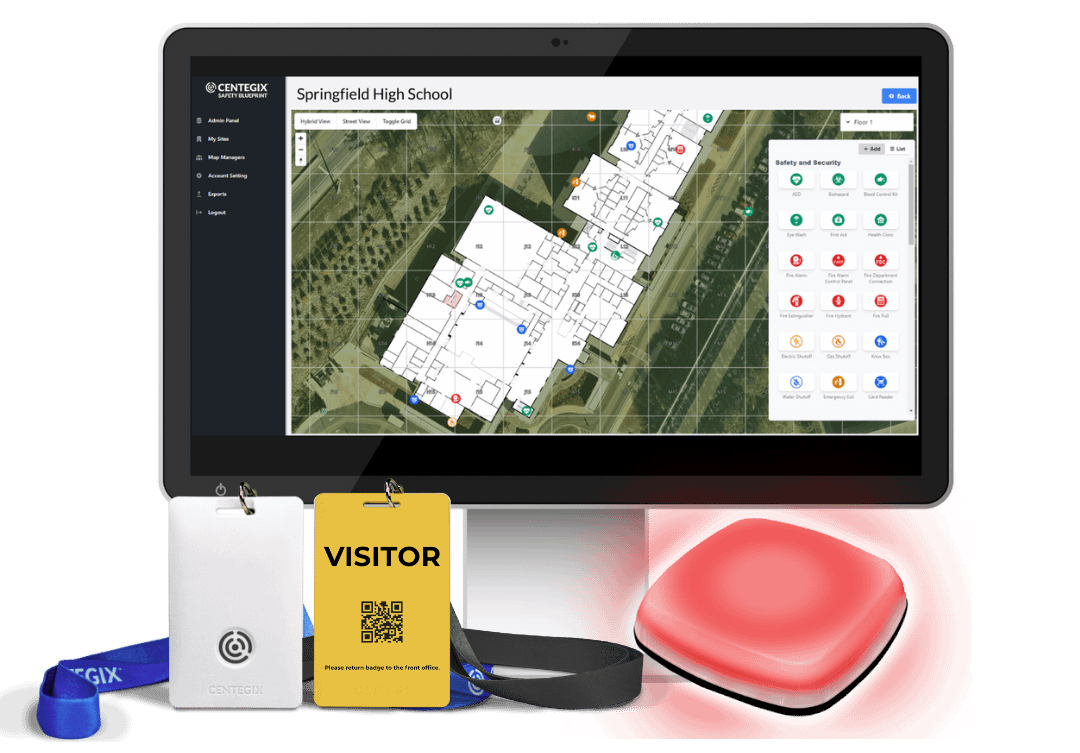The last several months have delivered painful blows to healthcare. This has leaders reshuffling priorities around workplace violence prevention to better protect their people and the patients they serve. Violence in healthcare is not a new topic, but recent events have brought the ongoing struggle for workplace safety to the forefront of conversations for health systems.
- On December 4, 2024, Brian Thompson, was shot and killed in Manhattan by a gunman who targeted him for his role as CEO at UnitedHealth.
- On February 18th, 2025, an HCA Florida Palms West Nurse, Leelamma Lal, was brutally attacked by a patient while on the job and left fighting for her life.
- On February 22, 2025, a gunman took ICU staff hostage at UPMC Memorial Hospital, injuring five people and killing a police officer.
- On March 18, 2025, the American Hospital Association and Health-ISAC released a safety bulletin advising of active planning of a coordinated, multi-city terrorist attack on hospitals.
This is the reality the healthcare workforce is currently facing. Health systems must work to align their safety protocols with the increased risk of violence. Failure to do so could have monumental consequences.
When Did Violence in Healthcare Start?
Violence in healthcare has been a problem for quite some time, yet healthcare workers have tolerated and underreported incidents for years. This is because of reasons ranging from empathy for assaulters (often patients and/or family members) to the impression that nothing would come from their reports. However, the COVID and post-COVID eras brought a substantial increase in aggression towards healthcare professionals that can no longer be ignored.
A survey published in 2024 sharing feedback from nearly 1,000 nurses in 48 states found that 82% of nurses across a variety of units had experienced workplace violence within the last year. The American College of Emergency Physicians (ACEP) confirmed their members felt this same pain. A January 2024 ACEP poll reinforced the fact that violence nationwide is on the rise. 91% of 1,980 responses from emergency physicians indicated that they or a colleague had been threatened or attacked in the past year. Nearly three-quarters of respondents believe that violence is worse than last year.
This creates a dangerous environment for the healthcare professionals who go to work each day to provide care for our communities; one that impacts their lives and well-being, and creates a deeply extensive ripple effect.
Are Health Systems Prepared to Respond with Stronger Workplace Violence Prevention Measures?
While attention on violence in healthcare has grown, effective workplace violence prevention plans are still playing catch-up in most health systems.
A 2024 Crisis Prevention Institute Report found that 82% of organizations did not meet the criteria for an effective and sustainable workplace violence prevention program. This finding spotlights room for improvement nationwide.
However, the health systems leading the way in violence prevention are building a lasting culture of safety for their organizations. The Director of Organizational Development and Employee Engagement at Infirmary Health shared the impact of safety on employee well-being and patient care in a recent AHA Forum. “Employees want to feel safe at work,” he said. “There are so many demands on healthcare workers now, just from taking care of the patients and families. The last thing that they need to worry about is their safety.”
Kala Bettis, MA, LSC, LAC, LPC, Integrated Behavioral Health Supervisor at Vail Health Behavioral Health, echoed that sentiment. “It’s about being proactive in this day and age and not waiting for an incident to occur, but really investing in your employee safety and well-being,” she shared. “Our President and CEO says that our best asset is our people. We are the people on the frontlines serving patients in our community. That is the whole heartbeat of our system. And if you protect the individuals that are providing that service, that’s the best investment that you can make.”
As more health leaders take a stand to prioritize workplace safety, health systems will collectively become better prepared to handle the growing threats against their organizations and their people.

How a Layered Approach Improves Workplace Safety
One of the most important realizations when considering improvements to an organization’s workplace safety plans is the understanding that rarely will one solution solve all problems. Because of this, safety leaders and consultants typically recommend a layered approach to workplace safety. This begins with assessments to understand all unique risks associated with an organization and a plan to mitigate the gaps identified in those assessments.
In a recent interview with Medical Economics, Andrea Greco, Senior Vice President of Healthcare Safety at CENTEGIX, highlighted the benefits of using a layered approach in workplace violence prevention. “You need different things to ensure that you can protect people in different scenarios, in different places, and when interacting with different people. That’s everything from tangible support like cameras and weapon detection to de-escalation training, and then to solutions, like CENTEGIX, that accelerate response times during an incident.”
Proper planning and prioritization is key to success here. While Greco cautions that “allowing a gap in one of those areas can be problematic,” she understands that many organizations must pace initiatives in phases. “Understand where you can make the biggest impact first, then prioritize from there. For many health systems, it’s about empowering their people to feel safer, and enabling them to summon help immediately, anytime they need it.”
Leveraging Technology to Enhance Safety in Healthcare
The silver lining surrounding the problem of workplace violence in healthcare is that technology continues to advance. Today, there are solutions designed to maximize every layer of protection healthcare organizations choose to place around their people. Whether it’s live security feeds and cameras that enhance situational awareness for responders, or wearable duress buttons that enable every healthcare worker to summon immediate help, safety technology is better than it’s ever been before.
“It’s really that emerging technology that’s going to help change the game for clinical partners,” said the Director of Security Operations for a Texas Health System. “There is absolutely no worse feeling for a nurse or clinical partner than feeling like they’re in a room by themselves when something terrible is happening. Giving them the ability to call for support and start that de-escalation process early is going to be monumental for the safety and security of staff and patients.”
Dr. Kevin Klauer, former emergency physician and CMO at HCA Florida Ocala and West Marion Hospitals, and Chair of the CENTEGIX Healthcare Advisory Board, spotlights CrisisAlert™ as “the solution we’ve been looking for”. “Knowing that in healthcare, if there’s a problem, you just hit that CrisisAlert badge,” he describes about the wearable duress button, “this is an outstanding solution to a long-standing problem.”
The CENTEGIX Safety Platform is the foundation for a layered approach to workplace safety, offering a comprehensive base for violence mitigation.
CrisisAlert™ empowers healthcare workers with immediate access to help through a wearable duress badge that works anywhere on campus. With a simple, one-button activation, healthcare staff can feel safer knowing they have a reliable, always-available way to request assistance. The system’s dependence on private LoRaWAN and Bluetooth networks ensures consistent protection throughout the facility without the need for Wi-Fi or cellular service.
Safety Blueprint™, a digital and incident mapping solution, offers precise location identification, ensuring response teams can rapidly locate those needing assistance down to the floor and room level. This comprehensive facility visualization helps healthcare organizations assess potential risks, reduce emergency response times, and locate critical safety assets.
Safety Platform’s data collection and reporting capabilities enable healthcare organizations to better track incidents, identify patterns, and make informed decisions about safety improvements. Automated and accessible reporting also ensure you gain a clear picture of the risks threatening your facilities, including near-misses, so you can plan confidently and appropriately.
Implementing these integrated safety solutions allows healthcare organizations to create an environment where staff can focus on what matters most—delivering exceptional patient care. When healthcare workers know they have immediate access to help whenever and wherever they need, they can dedicate their full attention to the demanding tasks of patient care.
A Safer Tomorrow for Healthcare
The healthcare workforce is a critical component of our society and communities. Attention must be given to protect those on the frontlines of care and the patients for whom they support. While we can’t control the increase of violence against healthcare workers, we can work together to create a safer environment—one built on preparedness, empowerment, and support. Click here to learn how CENTEGIX can help your organization foster a culture of safety.









